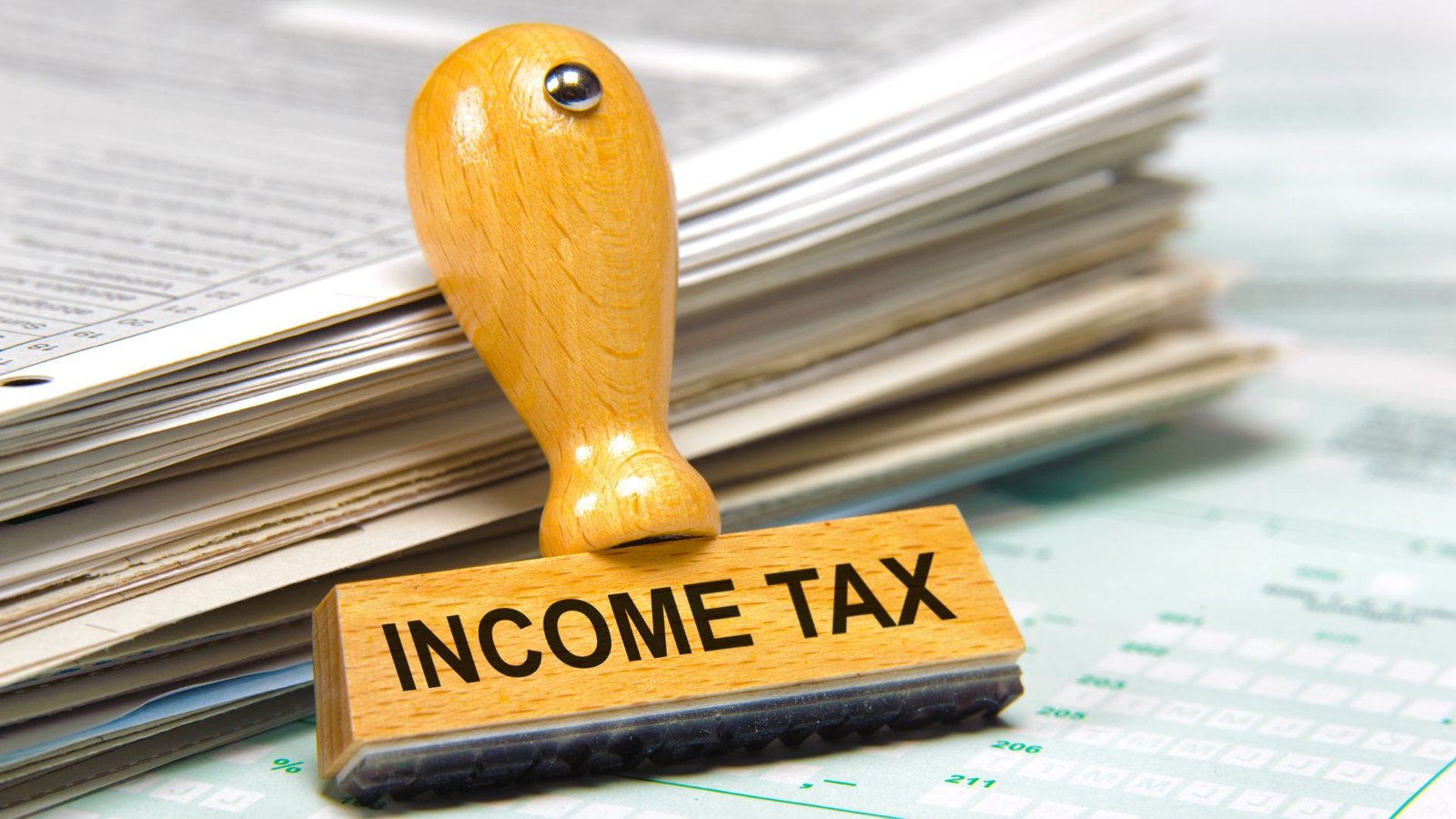On this page you will read detailed information about Section 112A of Income Tax Act.
You may be familiar with Section 112A of the Income Tax Act, which was introduced by the government to tax the income of residents from foreign companies in which they have substantial economic interest. However, determining the scope and applicability of this provision is complex and often confusing. In this article, we provide a detailed analysis and explanation of Section 112A to help you understand key concepts like resident and ordinary resident, reporting requirements, how income will be computed and taxed, exemptions if any, and potential issues or ambiguities. With examples and a clear discussion tailored to the target audience, we aim to shed light on this topic so you can assess how Section 112A may impact your foreign assets and income. Moving forward, stay tuned as we delve into the specifics in a professional yet accessible manner.
Overview of Section 112A of Income Tax Act
Section 112A of the Income Tax Act outlines the tax treatment of long-term capital gains arising from the transfer of capital assets. According to this section, long-term capital gains exceeding Rs. 1 lakh are taxable at 10% without indexation benefit.
Computation of capital gains
For computing capital gains, you must first determine the cost of acquisition and the cost of improvement of the capital asset. The cost of acquisition refers to the price you paid to acquire the asset, while the cost of improvement includes any expenses incurred to improve the asset. The capital gains are calculated as the difference between the net sale consideration received and the cost of acquisition together with the cost of improvement. If the asset was acquired before 1 April 2001, you can avail indexation benefit to adjust the cost of acquisition for inflation. The indexed cost of acquisition is calculated using the Cost Inflation Index (CII) published by the tax department annually.
Asset classification
Capital assets are classified into short-term and long-term based on their holding period. Assets held for up to 3 years are considered short-term, while assets held for more than 3 years are treated as long-term. Section 112A applies only to long-term capital gains from equity shares, units of equity-oriented mutual funds, and units of business trusts.
Exemption available
Long-term capital gains of up to Rs. 1 lakh realized from the transfer of these assets are exempt from tax under Section 112A. Any gains in excess of Rs. 1 lakh are taxable at 10% without indexation benefit. However, for equity shares acquired after 1 October 2004, you must pay securities transaction tax (STT) on both purchase and sale to avail this concessional tax rate. If STT is not paid, the long-term capital gains would be taxed at 20% with indexation benefit.
In summary, Section 112A provides a concessional tax regime for long-term capital gains arising from certain equity securities, subject to specified conditions. Taxpayers can avail significant tax savings by understanding and complying with the provisions of this section.
When Does Section 112A Apply?
Transaction Involving Transfer of Shares of a Private Company
Section 112A of the Income Tax Act applies when there is a transaction involving the transfer of shares of a private company. This includes scenarios where shares of a private company are transferred for consideration, gifted, or distributed to shareholders on liquidation.
Company Eligibility
For Section 112A to apply, the private company needs to meet certain eligibility criteria. The company should be an Indian company and its shares should have been held by the taxpayer for a minimum period of 24 months immediately preceding the date of transfer. The company should also qualify as a small or medium enterprise as per the Micro, Small and Medium Enterprises Act, 2006 in the financial year preceding the year of transfer.
Shareholder Eligibility
The shareholder transferring the shares should be an individual, Hindu Undivided Family (HUF) or firm. Section 112A does not apply if the transferor is a company. The shareholder should have held the shares for a minimum period of 24 months immediately prior to the transfer for Section 112A to apply.
Taxation of Long Term Capital Gains
If Section 112A applies, any long term capital gains arising from the transfer of such shares will be taxed at a flat rate of 10% without indexation benefit. This is lower than the general rate of 20% with indexation benefit that applies for long term capital gains from listed shares. The benefit of a lower 10% tax rate will be available only if the transaction takes place on a recognized stock exchange in India.
Section 112A provides a tax concession for long term capital gains arising from the transfer of shares of eligible private companies. By meeting the specified conditions, shareholders of private companies can avail a lower tax rate of 10% on such transfers. This encourages investment in private companies by providing investors an exit route at a concessional tax rate.
How Is Undistributed Income Calculated Under Section 112A?
Section 112A of the Income Tax Act outlines how undistributed income of a company is calculated. Undistributed income refers to the part of a company’s income that is not distributed to shareholders as dividends.
Calculation of Total Income
To determine undistributed income, a company must first calculate its total income for the relevant financial year under the provisions of the Income Tax Act. Total income includes income from all sources like business profits, capital gains, income from other sources, etc. Any deductions allowed under the Act are subtracted to arrive at total income.
Calculation of Distributable Profits
The second step is to calculate the company’s distributable profits for the year. This is done by making certain adjustments to the total income figure. Expenses disallowed under the Act but deducted to determine business profits are added back. Depreciation allowed under the Act is added back and depreciation at a specified higher rate is deducted. Similarly, other adjustments may be made as per the rules. The resulting figure is the distributable profits.
Deduction of Dividends
Any dividends distributed by the company to its shareholders during the year or within the prescribed time are deducted from distributable profits to arrive at undistributed income. The company has to pay additional tax on such undistributed income at the specified rates. The objective is to encourage companies to distribute more of their profits among shareholders.
Carry Forward of Undistributed Income
If a company is unable to distribute dividends due to inadequate or absence of profits in a year, the undistributed income of that year can be carried forward to the following year. The company can adjust such carried forward undistributed income against its distributable profits of the following year before paying additional tax on undistributed income for that year. This provides relief to companies during lean years.
In summary, undistributed income refers to the portion of a company’s income that remains undistributed as dividends to shareholders. It is calculated by determining the total income, making adjustments to arrive at distributable profits and deducting any dividends distributed. Additional tax is payable on such undistributed income to promote higher dividend payouts by companies.
In the previous post, we had shared information about Understanding the GST Composition Scheme, so read that post also.
Tax Rates Imposed on Undistributed Income Under Section 112A
Retention of income
Section 112A of the Income Tax Act imposes an additional tax on closely-held corporations that retain an unreasonable amount of their income instead of distributing it to shareholders. The tax is intended to prevent corporations from retaining income at the corporate level to avoid higher personal income tax rates. Corporations subject to section 112A must pay a 20% tax on undistributed income for the year.
Determining unreasonable retention
Whether the retention of income is unreasonable depends on the facts and circumstances of each case. Factors considered include the corporation’s business needs and future expansion plans, its past dividend history, and general economic conditions. As a general rule, if a corporation retains more than 70-80% of its after-tax income, the retention may be deemed unreasonable. However, each case is evaluated individually.
Calculating undistributed income
Undistributed income subject to section 112A tax is calculated as taxable income less any dividends paid during the year and less a deduction for reasonable needs of the business. Reasonable needs of the business include expenses incurred to generate income, capital expenditures, principal repayments, and working capital. The working capital allowance is capped at 5% of the cost of investments in assets used to generate business income.
Avoiding section 112A tax
Closely-held corporations can avoid section 112A tax by distributing a reasonable amount of their after-tax income to shareholders, especially if their income retention in previous years was also low. They can also justify higher retentions in certain years by documenting their business needs and plans for future expansion and growth. In some cases, paying out excess retained earnings from previous years may also help avoid section 112A tax on current year’s income.
Corporations should evaluate their situation carefully and take appropriate actions to minimize their tax liability under section 112A. Distributing reasonable dividends while also retaining adequate funds for business needs is the balanced approach that can help closely-held corporations optimize their tax position.
Comparison of Section 112A to Other Anti-Avoidance Rules
General Anti-Avoidance Rule (GAAR)
Section 112A of the Income Tax Act is often compared to the GAAR, which gives the tax authority the power to deny the tax benefits of certain arrangements that are entered into with the main purpose of obtaining a tax benefit. However, Section 112A is more specific than the GAAR and targets only dividends that are distributed through investment holding companies. The GAAR is a broader provision that can apply to any type of tax avoidance arrangement.
Thin Capitalisation Rules
The thin capitalisation rules limit the amount of interest that can be deducted by corporations in computing their taxable income. These rules are aimed at preventing multinational corporations from structuring their financing in a way that maximises interest deductions in high-tax countries. In contrast, Section 112A does not deal with interest expense deductions and instead focuses specifically on dividends that are distributed by investment holding companies.
Controlled Foreign Affiliate Rules
The controlled foreign affiliate rules are designed to prevent Canadian corporations from deferring the taxation of passive income earned through foreign affiliates. Section 112A does not deal with income earned through foreign affiliates. It applies only to dividends received by Canadian corporations from non-arm’s length domestic investment holding companies.
In summary, while there are several anti-avoidance provisions in the Income Tax Act aimed at preventing different types of tax avoidance transactions, Section 112A is a targeted rule focused specifically on the distribution of dividends through investment holding companies for the purpose of obtaining the dividend tax credit. The other rules discussed above address different types of tax avoidance arrangements not covered by Section 112A. Section 112A should therefore not be seen as duplicating the purpose of these other provisions.
Planning Considerations Under Section 112A
Taxation of Long-Term Capital Gains
Under Section 112A of the Income Tax Act, long-term capital gains arising from the sale of equity shares or equity-oriented mutual funds are taxed at a concessional rate of 10% on amounts exceeding Rs 1 lakh. This preferential tax treatment is applicable if:
- Securities transaction tax (STT) has been paid on both purchase and sale of such shares or units of equity-oriented funds; and
- Such shares or units are held for a minimum period of 12 months from the date of acquisition.
To avail the benefit of the concessional tax rate under Section 112A, taxpayers should carefully plan their investments and track the holding period of equity shares and equity mutual funds. Investments should be made with a long-term perspective to hold them for at least 12 months. Any sale before 12 months will attract capital gains tax at the normal slab rates.
Choice of Growth Option in Mutual Funds
While investing in equity mutual funds, investors have the choice of growth option or dividend payout option. Under the growth option, the fund does not declare dividends and the returns are reflected in the NAV appreciation. On redemption, the gains are taxed as long-term capital gains if units are held for over 12 months. However, in the dividend payout option, dividends are declared and paid out periodically. Though dividends are tax-free in the hands of investors, the NAV falls to the extent of the dividend.
Hence, for optimum tax efficiency, the growth option should be preferred as it allows maximum capital appreciation and lower tax liability. The overall returns would be higher in the growth option as compared to the dividend payout option, especially for investments made with a long-term perspective. Investors in higher tax brackets can benefit more from choosing the growth option.
Diversification of Investments
To mitigate risks and optimize returns, investors should diversify their equity investments across sectors, market capitalizations, styles, and financial instruments. A balanced portfolio with the right mix of large-cap, mid-cap and small-cap funds as well as sectoral/thematic funds can help achieve long-term goals while taking advantage of the concessional tax rates under Section 112A.
Recent Developments and Guidance on Section 112A
Section 112A of the Income Tax Act, introduced in 2018, provides for a concessional tax regime for long term capital gains arising from transfer of equity shares and units of equity oriented fund or business trust. The provision provides relief to taxpayers by levying tax at a lower rate of 10% on such long term capital gains, subject to certain conditions.
The provision has seen several amendments and clarifications since its introduction. Some of the key developments are discussed below:
The Finance Act, 2019 expanded the scope of section 112A to include units of Infrastructure Investment Trusts (InvITs) and Real Estate Investment Trusts (REITs). Thus, long term capital gains arising from transfer of units of InvITs and REITs also qualify for concessional tax rate of 10% under section 112A.
The CBDT issued a circular in 2019 clarifying that section 112A will apply to long term capital gains arising from transfer of shares of companies and not to units of a limited liability partnership. The benefit under section 112A is available only in respect of transfer of shares of companies and not on transfer of any other securities.
The Finance Act, 2020 amended section 112A to provide that the concessional tax regime shall not apply if the taxpayer opts for taxation under section 115BAC. Section 115BAC provides for a lower tax regime with concessional tax rates for individuals and HUFs subject to certain conditions. The taxpayer will have to opt in to avail the benefits of section 115BAC and opting in will make section 112A inapplicable.
The Finance Act, 2021 amended section 112A to withdraw the exemption provided for long term capital gains arising from transfer of equity shares acquired before October 1, 2004. However, gains arising from such shares shall be taxed at the rate of 10% if Securities Transaction Tax (STT) was paid on acquisition and transfer of such shares.
In summary, section 112A provides relief to investors in equity shares and specified units by taxing long term capital gains at a concessional rate of 10%. However, its applicability and scope continues to evolve through amendments and clarifications. Investors must keep themselves updated on the developments around section 112A to determine its applicability and benefits in specific cases.
Frequently Asked Questions About Section 112A
Section 112A of the Income Tax Act provides relief from long term capital gains tax on sale of residential property. Investors who have questions regarding eligibility and applicability of this section can find answers to some frequently asked questions below:
To qualify for exemption under section 112A, the residential property should be held for at least 24 months from the date of purchase. The date of purchase is the date on which the sale deed is registered. The holding period is calculated from the end of the financial year in which the property is purchased.
Only residential houses and flats qualify for exemption under this section. Commercial properties, industrial buildings and plots do not qualify. The property should be used for residential purposes and not commercial purposes.
The capital gains is calculated as the difference between net sale consideration and indexed cost of acquisition. The cost of acquisition is indexed based on the Cost Inflation Index (CII) for the year of purchase and the year of sale. This helps in reducing the capital gains amount on which tax is payable.
The maximum capital gains exemption allowed under section 112A is Rs 2 crore. If the capital gains from sale of residential property exceed Rs 2 crore, the excess capital gains will be taxable as per the income tax slab rates applicable to the assessee.
Yes, the exemption under section 112A can be claimed for capital gains from sale of two residential houses. However, the total capital gains from sale of two houses should not exceed Rs 2 crore. The holding period of 24 months should be satisfied for each house.
If the sale proceeds from the residential property are used to buy another residential house within specified timelines, the entire capital gains can be claimed as exemption under section 54 of the Income Tax Act. Section 112A exemption will not apply in such cases.
Conclusion
Thus, based on the analysis in this article, section 112A of the Income Tax Act imposes taxes on long-term capital gains exceeding Rs 1 lakh from the sale of equity shares. While the section aims to curb tax evasion, concerns persist regarding its impact on genuine investments. As an investor, you must consider how section 112A may influence your investment decisions and portfolio management. Consult a financial advisor to develop suitable strategies aligned with your financial goals and risk appetite while remaining compliant under the law. Continually review your portfolio and be prepared to make adjustments as policies evolve. With prudent planning, section 112A need not adversely affect your investment journey.
Disclaimer
The information and services on this website are not intended to and shall not be used as legal advice. You should consult a Legal Professional for any legal or solicited advice. While we have good faith and our own independent research to every information listed on the website and do our best to ensure that the data provided is accurate. However, we do not guarantee the information provided is accurate and make no representation or warranty of any kind, express or implied, regarding the accuracy, adequacy, validity, reliability, availability, or completeness of any information on the Site. UNDER NO CIRCUMSTANCES SHALL WE HAVE ANY LIABILITY TO YOU FOR ANY LOSS OR DAMAGE OF ANY KIND INCURRED AS A RESULT OR RELIANCE ON ANY INFORMATION PROVIDED ON THE SITE. YOUR USE OF THE SITE AND YOUR RELIANCE ON ANY INFORMATION ON THE SITE IS SOLELY AT YOUR OWN RISK. Comments on this website are the sole responsibility of their writers so the accuracy, completeness, veracity, honesty, factuality and politeness of comments are not guaranteed.
So friends, today we talked about Section 112A of Income Tax Act, hope you liked our post.
If you liked the information about Section 112A of Income Tax Act, then definitely share this article with your friends.
Knowing about laws can make you feel super smart💪 ! If you find value in the content you may consider joining our not for profit Legal Community ! You can ask unlimited questions on WhatsApp and get answers. You can DM or send your name & number to 8208309918 on WhatsApp











